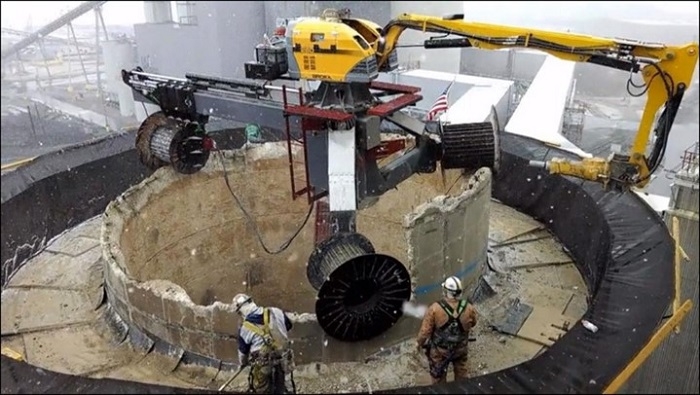INL spent fuel transfers are ahead of schedule

Crews at the Department of Energy’s Idaho National Laboratory Site recently completed work to transfer baskets of spent nuclear fuel ahead of a September 30 deadline.

A message from NV5, Inc.
Seconds Matter: Rethinking Nuclear Facility Security for the Modern Threat Landscape

Crews at the Department of Energy’s Idaho National Laboratory Site recently completed work to transfer baskets of spent nuclear fuel ahead of a September 30 deadline.

Work crews have started retrieval of radioactive and chemical waste from a third set of underground storage tanks at the Hanford Site, according to the Department of Energy's Office of Environmental Management. Contractor Washington River Protection Solutions (WRPS) is retrieving and transferring more than 325,000 gallons of waste from the single-shell Tank A-101 at the site's A Tank Farm. The waste is being sent to a newer double-shell tank for continued safe storage.
Retrieval activities began one month after workers emptied the site’s 21st single-shell tank. Waste removed from the 21 tanks totals about 3 million gallons.

This spring, the U.S. Government Accountability Office (GAO) released an insightful report reviewing and summarizing the status and performance of the largest projects and operations within the Department of Energy’s Office of Environmental Management (EM), which is responsible for the cleanup of hazardous and radioactive waste at sites and facilities that have been contaminated from decades of nuclear weapons production and nuclear energy research.

The amount of salt mined so far from Panel 8 at the Department of Energy’s Waste Isolation Pilot Plant (WIPP) is a lot. The DOE’s Office of Environmental Management (EM) compared the amount to the weight of more than 46,000 Ford F-150s, about 16,000 African bush elephants, nearly 510 Boeing 747s, two Titanics, or enough to coat the rims of 3.6 million margarita glasses.
Miners working 2,150 feet underground extract the salt using grinders called continuous miner machines to create space to place defense-related transuranic (TRU) waste.
With WIPP’s Panel 8 scheduled for completion in a little more than half a year, crews recently crossed the 100,000-tons-mined threshold and, as of mid-June, are at 105,000 tons removed from the panel.

Workers use the MANTIS to demolish the High Flux Beam Reactor's exhaust stack, a prominent part of the Brookhaven National Laboratory. Source: DOE EM
Work crews have demolished the High Flux Beam Reactor (HFBR) exhaust stack at Brookhaven National Laboratory, on Long Island, N.Y., the Department of Energy’s Office of Environmental Management (EM) reported last week.
The 320-foot-tall red-and-white stack was decommissioned and demolished under the direction of the DOE, with oversight by the U.S. Army Corps of Engineers.
Demolition work: Removal of the stack started in early January using a concrete chimney demolition system called the MANTIS. Work crews dismantled the stack down to its base, about 36 feet above ground, before fully demolishing it in late February.
The next steps for the project are the cleanup of soils, the removal of the below-ground stack infrastructure, and verification that cleanup goals have been met. The Oak Ridge Institute for Science and Education will conduct independent verification of the stack cleanup, according to the DOE.
The first rail shipment of the stack’s debris to off-site disposal will involve 65 intermodal waste containers loaded onto a 10-railcar train. About 45 additional containers are expected to be shipped as part of the second and final waste shipment.